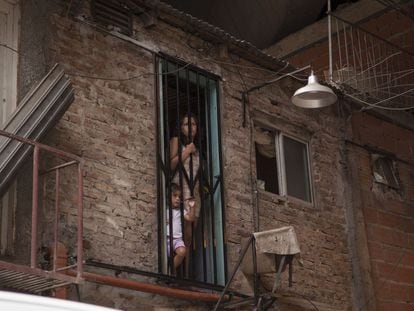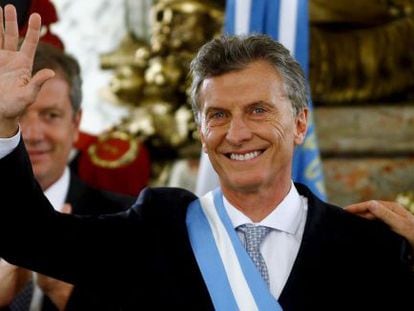Latest figures show one in three Argentineans lives in poverty
Almost 1.5 million people in the country have joined ranks of the poor over the last year


It’s official: nearly one-third of Argentina’s population lives in poverty, the government said on Wednesday, after the release of the first official poverty data in three years, further highlighting the challenge facing President Mauricio Macri in meeting the “zero poverty” goal he announced when he took office nine months ago.
Indec, the government statistics agency, carried out a survey in the second quarter of 2016 of 27.2 million people in 31 cities (Argentina’s population is 45 million), and discovered that 8.8 million people, or 32.2% of the population, live below the poverty line; just over 6% qualified as “indigent”.
We’re all surprised the starting point was so bad and that corruption is so widespread President Macri
The agency defines the poverty line as whether a household has enough income to afford the food it needs, as well as non-food goods considered essential.
“Knowing that one in three Argentineans find themselves below the poverty line is something that has to hurt us, something that has to make us angry, and that has to get us to commit to work together,” Macri said at a press conference held specifically to comment on the survey. The president said his plans to attract investment, create jobs and slash inflation was the best way to reduce poverty. The economy remains mired in recession, with GDP shrinking 2.1% in the second quarter of 2016. Macri called inflation a “tax always paid by those who have least.”
Macri has implemented pro-business reforms since taking office in December, spurring inflation and plunging some 1.4 million people into poverty. That has contributed to falling approval ratings, which may weaken his center-right party’s performance in congressional elections next year.
The agency defines poverty as whether a household can afford the food it needs
These are the first figures in three years, following an overhaul of Indec after widespread allegations of manipulation under former leftist President Cristina Fernández de Kirchner. The agency last published poverty data in October 2013 for the first half of that year, when it said just 4.7% of people lived in poverty. Without reliable government data, Macri had cited poverty statistics from researchers at the Catholic University of Argentina.
Those figures showed 32.6% of Argentineans lived in poverty as of April, up from 29% in December 2015, as Macri's decisions to lift currency controls, cut utility subsidies and reduce agricultural export taxes led to inflation expectations of 40% in 2016.
Argentina’s poverty rate is substantially higher than that of neighboring Chile, where, over the last three years poverty has fallen to around 11%. In the United States, 13.5% of the population lived in poverty in 2015, down from 14.8% in 2014.
“If the majority of Argentineans voted for change, it’s because they felt things weren’t going well,” said Macri, adding: “We are all surprised that the starting point was so much worse and that corruption was so widespread. This means the hill we have to climb is more difficult than we imagined. But Argentina has made its mind up.”
English version by Nick Lyne.












































